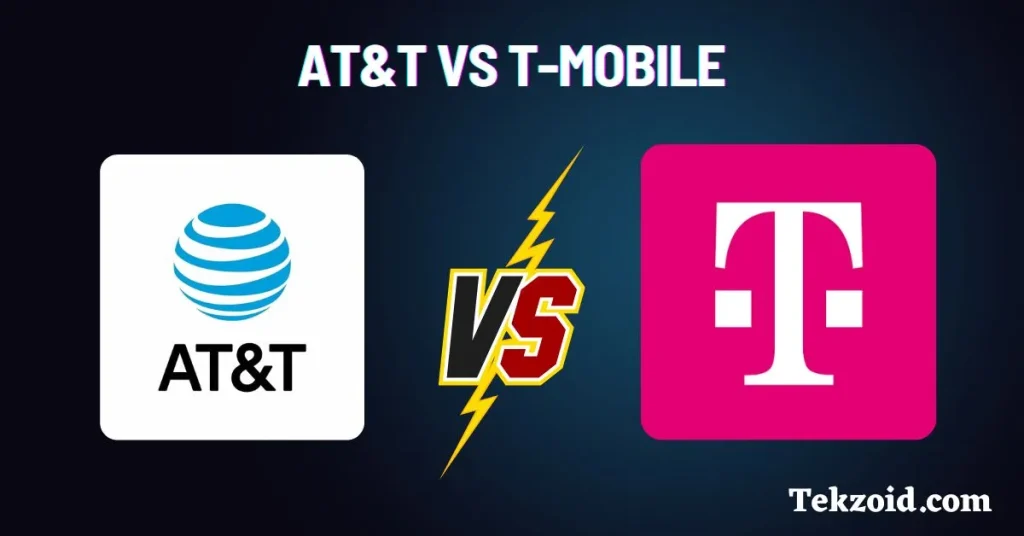If your phone signal disappears the second you step inside a building, or you’ve ever tried making a call while driving through a lonely highway and ended up talking to static instead of your friend… yeah, I’ve been there too. That’s when you start thinking maybe it’s time to change your carrier.
Today I’m just going to keep it simple — AT&T vs T-Mobile. Which one is faster, which one covers more ground, and which one is better for the way you actually use your phone?
Table of Contents
AT&T vs T-Mobile: Coverage and Reliability

If you live in a big city, both are fine most of the time. But once you start getting into the suburbs or take weekend road trips through less populated areas, AT&T usually has the edge.
Their 4G LTE coverage is strong across the U.S., especially in rural areas. It’s not exciting, but it’s dependable. Think of it like driving a Toyota Camry — not flashy, but it just works when you need it to.
T-Mobile, on the other hand, has been pushing 5G everywhere. In cities and busy towns, their speeds are ridiculous — like download-a-movie-before-the-traffic-light-turns-green fast. But once you go into the countryside, you might find yourself staring at the “No Signal” icon more often than you’d like.
Speed and Performance
No contest here — T-Mobile wins. Their 5G network is currently the fastest in the U.S., sometimes 4–5 times faster than AT&T in certain areas.
If you stream a lot, play online games, or take video calls while working from coffee shops, T-Mobile is hard to beat.
AT&T’s speeds are fine for daily use — you’ll get your emails and scroll Instagram without issues. But if you’re trying to watch 4K YouTube while on the move, you might notice a bit of lag.
AT&T vs T-Mobile: Pricing and Plans
Both carriers have unlimited plans that run around $85 to $100 per month for the premium tier. The difference is in the extras.
T-Mobile loves adding perks — Netflix, Apple TV+, free in-flight Wi-Fi, and international data on many of their plans. It feels like they’re throwing in free snacks just for being a customer.
AT&T? They’ve cut back on freebies. No streaming service bundles. What you do get is more hotspot data and solid service. Basically, “Here’s your plan, it works, now go use it.”
Family Plan Flexibility
This one depends on your situation. AT&T lets you mix and match — so grandma can have a basic plan and your younger brother can go all-out with the premium package.
T-Mobile takes a simpler approach. Everyone gets the same plan. That’s easier to manage, but not as flexible if people in your family use their phones very differently.
International Use
If you travel outside the U.S., T-Mobile is much friendlier. Most premium plans include high-speed data in over 200 countries without extra charges.
AT&T uses day passes for international roaming. They work fine, but if you’re traveling for more than a few days, the cost starts adding up quickly.
Video Guide:
My Take
If you live in a city or suburb with strong T-Mobile coverage, and you like perks like free streaming subscriptions or travel benefits, T-Mobile’s probably the better choice.
But if you spend a lot of time in rural areas, or you need a mix-and-match family plan, AT&T might be the safer bet.
At the end of the day, it’s not about which brand shouts louder with billboards. It’s about where you live, how you use your phone, and whether speed or coverage matters more to you.
I always tell people — check your zip code, look at coverage maps, maybe even test a prepaid plan before committing. A logo color shouldn’t decide how many bars you get.
So, are you Team Magenta or Team Blue?
Also, check out – T-Mobile Familymode Explained
Related FAQs
Which carrier is better for rural areas?
AT&T usually works better if you’re in small towns or out in the countryside.
Who has the cheapest basic plan?
It changes with promos, but T-Mobile often runs cheaper deals for new customers.